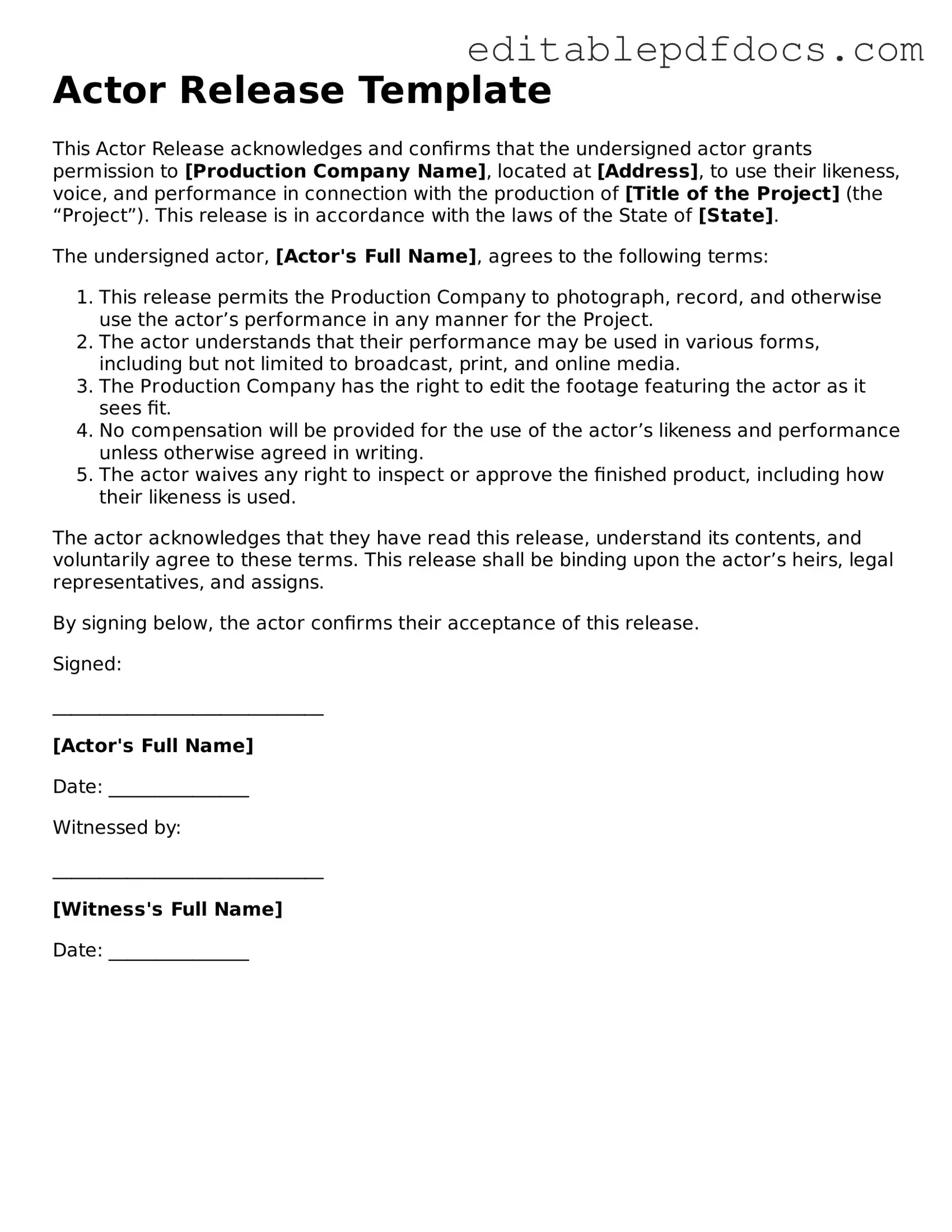In the world of film and theater, the Actor Release form plays a crucial role in ensuring that both actors and production companies are protected and informed. This document serves as a formal agreement between the actor and the production team, granting permission for the use of the actor's likeness, voice, and performance in various media formats. By signing this form, actors acknowledge their understanding of how their performances will be used, whether in promotional materials, trailers, or final edits of the project. The form typically outlines the rights and responsibilities of both parties, including details about compensation, duration of use, and any limitations on the scope of the agreement. It is essential for actors to carefully review the terms before signing, as this document can have lasting implications for their careers. Ultimately, the Actor Release form fosters a clear and respectful relationship between performers and producers, paving the way for successful collaborations in the entertainment industry.
